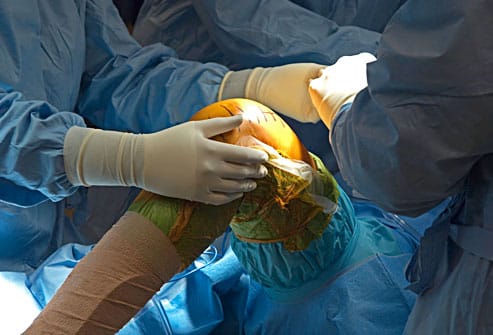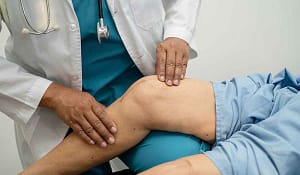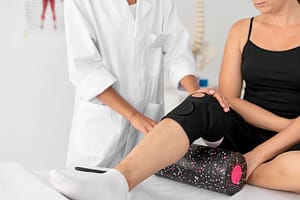[cmsmasters_row][cmsmasters_column data_width=”1/1″][cmsmasters_text]
Total Knee Replacement Surgery
Total knee Replacement Surgery popularly known as Knee Replacement Surgery can help with severe arthritis pain and may help you walk easier too.
As successful as the Knee Replacement Surgery is, it comes with a lot of Myths attached to it.
In today’s blog, we want to cover all the major Myths along with actual Facts related to it to make all the needful patients aware of the facts & realities related to Total knee Replacement Surgery.
#1 Myth – I should wait as long as possible to undergo knee replacement surgery.
#1 FACT– Incorrect, it is not required to wait for the surgery until the pain becomes intolerable. Unnecessarily waiting for surgery and delaying the surgery can result in being technically more challenging for the surgeon and it causes patients health to deteriorate overtime and increases the likelihood of surgery related complications.
#2 Myth – Alternative therapies such as Accupressure, Ozone Treatment, Massage beds, oils, laser therapy, Magnetic Therapy and braces will cure my advanced Arthritis and knee pain.
#2 Fact– There is no scientifically proven permanent non-surgical cure for advanced knee Arthritis till date.
#3 Myth– I am too old for surgery.
#3 Fact– Age is not a contraindication for surgery. if clinically fit, elderly patients can also get knee replacement surgery done. We have patients who have undergone knee replacement even at the age of 90 years and are enjoying life after knee replacement surgery.
#4 Myth– knee replacement surgery is very painful surgery. There is a lot of pain in post-operative period.
#4 Fact– Modern day pain management such as multimodal approach ensures that the patient does not feel any pain during surgery or in post-operative period and has a smooth recovery. Moreover, we are operating the patients of knee replacement surgery in our hospital by a newly devised technique known as ‘SLPL’ technique that means stitchless and painless technique. By painless, we mean that we have almost minimised the patients VAS score to 1 or 0. It is possible only, due to minimal incision during surgery, proper analgesia and a good physiotherapy.
#5 Myth– After knee replacement surgery, it takes months to recover.
#5 Fact– After 24 to 48 hours of surgery, patient becomes independent for toilet activities with the help of Walker. Weight bearing is started on day second and knee bending is permissible up to 90 degree by the end of day 2. Around 3 weeks to 4 weeks most of the patients can participate in outdoor social activities without any walking aids.
#6 Myth– The new knee last for 10 years only.
#6 Fact– With modern day Precision and advancement in biomaterials, the survivorship has increased considerably. Today’s joint replacement implants lasts for around 25 to 30 years or maybe longer and for many people they last for a lifetime.
#7 Myth– I am obese I cannot undergo knee replacement surgery.
#7 Fact – knee replacement surgery can be successfully done in an obese patient as well. Infact, with painful arthritic joint it is very difficult to lose weight as the patient is hardly able to move .we have patients who have undergone knee replacement surgery even with the weight of around 113 kg, 108 kg and are living there life perfectly well after the surgery.
#8 Myth– I have diabetes or hypertension or heart disease so I cannot undergo knee replacement surgery.
#8 Fact– Our senior anesthesiologist says that diabeties, hypertension and heart ailments are no longer a contraindication for surgery. However, a detailed preanaesthetic check up is routine now a days for every patient undergoing knee replacement surgery.
#9 Myth– knee replacement is just like replacement of kidney or liver replacement. My whole knee will be removed and new will be put.
#9 Fact– Not true at all. The whole knee is never removed. Only the wornout articular surfaces of the bones (usually around 8 to 9 mm) are removed and replaced with artificial ones known as implant. Technically speaking the word knee replacement itself is a misnomer the correct word for this surgery should be knee resurfacing rather than knee replacement.
#10 Myth– I can always get good results getting a costly knee implanted.
#10 Fact– False. Results of the surgery depend on the implant, although the accuracy and the success of the surgery depends more on the surgeon and his technique.
#11 Myth– Its always better to undergo knee replacement surgery for both knees at the same time.
#11 Fact– Incorrect, Whether single knee or both knees need surgery, it depends on clinical symptoms experienced by the patient and arthritic involvement developed in the knees .if only one knee is damaged, only the same should be operated. However, if both knees are damaged, both should be replaced (whether to do in a single sitting or staged procedure, it depends on general medical condition, comorbidities and age of the patient). If one knee is completely damaged, other is partially affected, still only the completely damaged one should be replaced as it will save the partially damaged knee and try to give natural number of years to that knee.
#12 Myth– My whole life will get changed.
#12 Fact– Partially correct. Yes , the life of patient will definitely change. However the expectations should be realistic. Patients will be able to do most of the activities after surgery i.e Climbing stairs, walking, gradual jogging, dancing, travelling long distances by rail or airways, cross legged sitting on bed . However, cross legged sitting and squatting on ground should be avoided, as these activities require greater range of motion of knees. The range is possible after the surgery, but it causes the wear and tear of implants at a much faster rate. So,I ts better to avoid those two activities.
[/cmsmasters_text][/cmsmasters_column][/cmsmasters_row]




